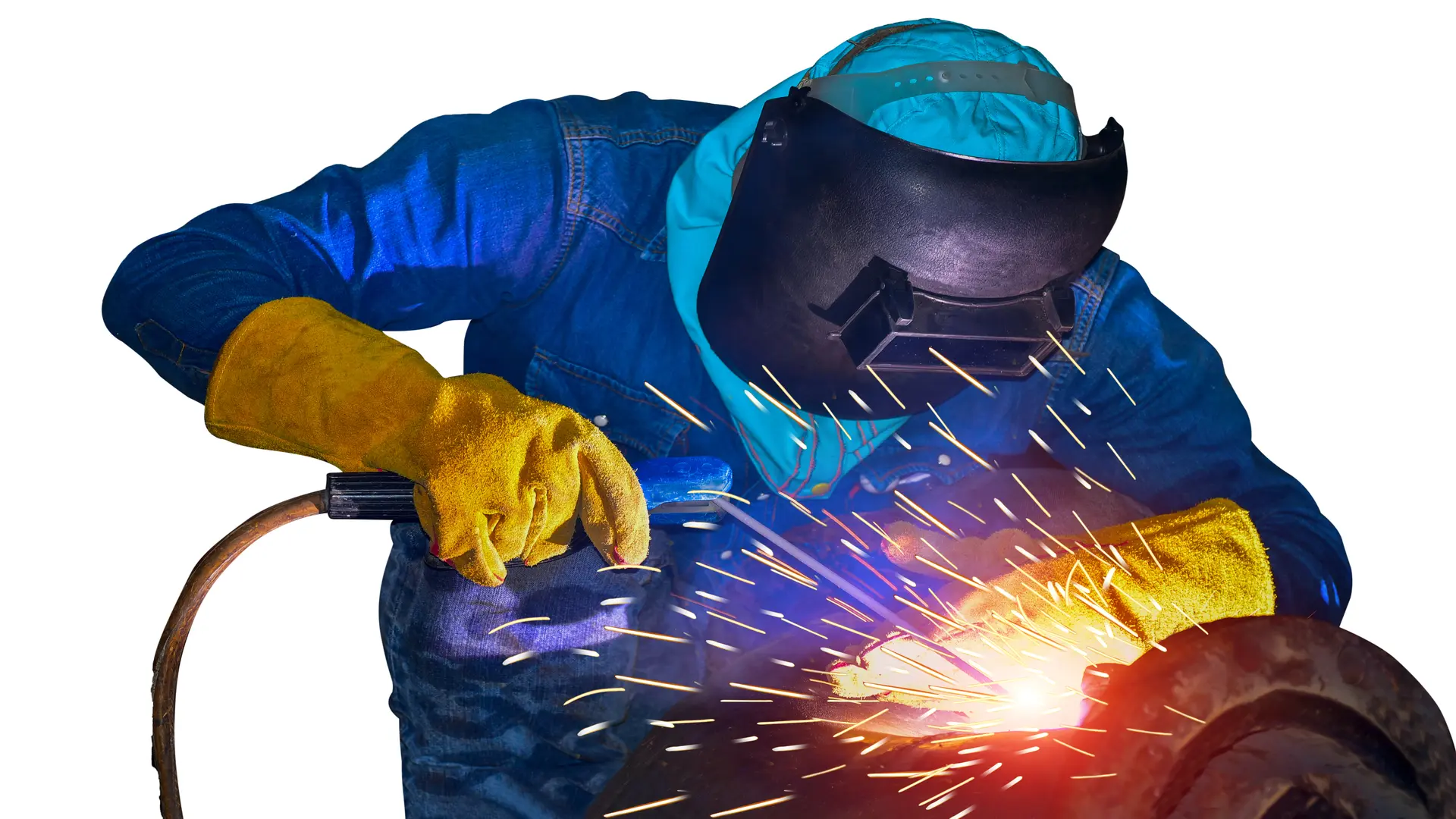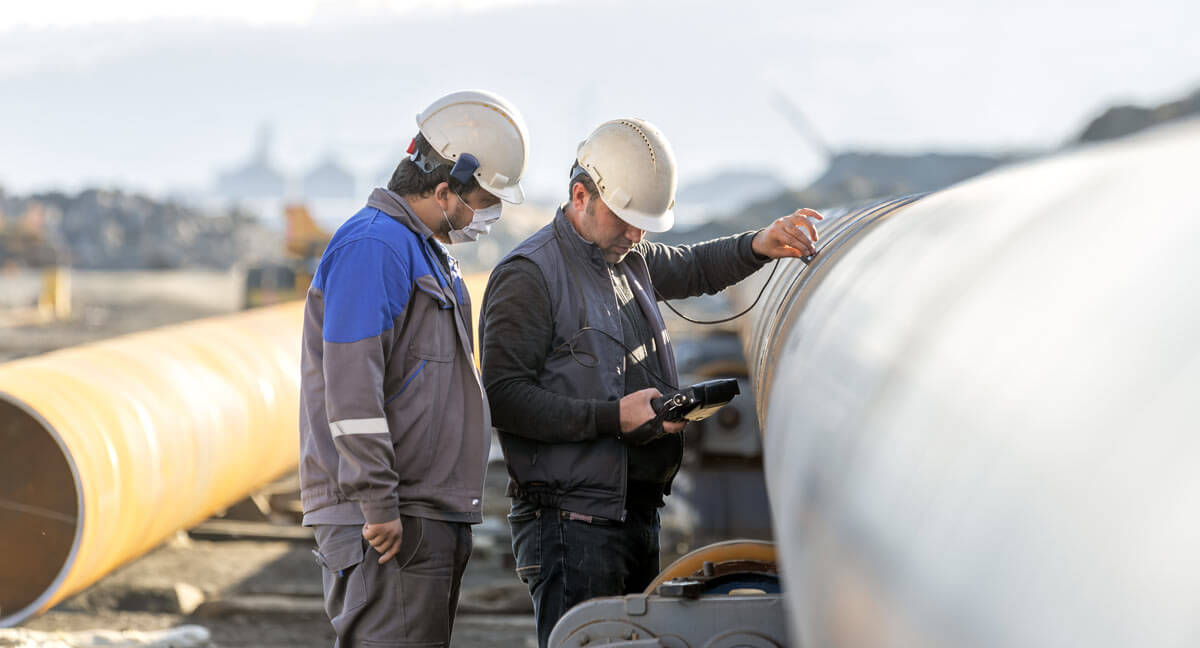Qualified Houston Welding Inspection Professionals for High-Quality Assessments
Qualified Houston Welding Inspection Professionals for High-Quality Assessments
Blog Article
Just How Welding Inspection Works: A Comprehensive Evaluation of Approaches, Standard, and the Duty of Examiners in Guaranteeing Structural Stability and Security
Welding assessment is an important component in the building and construction and production industries, where the stability of welded joints is vital to safety and security and integrity. Numerous techniques, including non-destructive and visual screening strategies, are used to spot potential imperfections that could jeopardize architectural efficiency - Houston Welding Inspection. Assessors are charged with not just reviewing weld top quality against rigid standards yet likewise translating intricate codes and criteria. As we discover the complexities of this career, the difficulties dealt with by assessors in preserving security and compliance will certainly reveal a deeper understanding of their important function in guarding infrastructure.
Relevance of Welding Inspection
Welding assessment is vital in making certain the integrity and safety of welded structures, with research studies suggesting that approximately 70% of structural failings can be traced back to poor welding practices. This highlights the relevance of methodical assessment procedures throughout the welding lifecycle, from prep work to conclusion. Efficient assessment not only determines flaws before they escalate into significant concerns yet additionally makes sure compliance with industry standards and guidelines.

The role of welding inspectors extends past mere quality assurance; they are essential in guarding public security and reducing liability for companies. By applying rigorous evaluation procedures, firms can spot issues such as incomplete blend, fractures, or excessive porosity, which can compromise the overall toughness of a welded joint. Ongoing training and qualification of assessors add to the general quality guarantee in welding procedures, cultivating a culture of safety and security and quality.
On top of that, welding evaluation plays a pivotal function in preserving operational performance. Identifying flaws early while doing so promotes timely corrective actions, minimizing pricey rework and task delays. Ultimately, a robust evaluation framework functions as a foundation for long lasting and trustworthy bonded frameworks, guaranteeing they fulfill both practical and safety and security needs.
Usual Inspection Methods
Exactly how can one make certain the top quality of welded joints throughout the inspection procedure? The implementation of different assessment techniques is crucial in assessing weld integrity and identifying potential flaws. Usual approaches include Visual Evaluation (VT), which is frequently the initial line of defense, enabling examiners to identify surface flaws such as fractures, porosity, or incomplete blend by aesthetically evaluating the welds.
Ultrasonic Evaluating (UT) is another widely made use of technique, employing high-frequency sound waves to identify interior problems within the weld. This method is particularly reliable for discovering concerns that are not noticeable to the nude eye. Radiographic Checking (RT) utilizes X-rays or gamma rays to produce photos of the weld, allowing the identification of volumetric issues, such as spaces or additions.
Magnetic Particle Examining (MT) and Fluid Penetrant Examining (PT) are additionally noticeable approaches, concentrating on surface flaws. MT relies upon magnetic areas to disclose surface area and near-surface suspensions, while PT includes applying a fluid dye to highlight defects. Each of these techniques offers an unique function, ensuring the extensive assessment of bonded joints and protecting structural integrity and security.
Criteria for Examining Welds
The assessment of welds is guided by a set of recognized requirements that make sure both functionality and security in welded structures. These requirements include various variables, including weld dimension, account, and infiltration, which should satisfy specified criteria. Conformity with industry codes, such as those established by the American Welding Society (AWS) or Read Full Report the American Culture of Mechanical Engineers (ASME), is necessary in determining the reputation of a weld.

Weld metallurgy plays an important duty; the assessment takes into consideration the combination high quality between base and filler materials, as well as heat-affected zones. The total mechanical homes, consisting of tensile stamina and ductility, have to fulfill the demands developed for the specific application. Collectively, these requirements make sure that welds not just fulfill visual standards but also carry out dependably under operational conditions.
Role of Welding Inspectors
A welding assessor's experience is pivotal in ensuring the integrity and top quality of bonded structures. These experts play an essential role in the manufacture and building and construction procedure by confirming that welding procedures abide by developed standards and specs. Their duties include an extensive variety of jobs, consisting of aesthetic examination of welds, reviewing welding click here to read documents, and carrying out non-destructive testing (NDT) approaches such as radiographic or ultrasonic screening to identify defects.
Welding examiners are additionally liable for analyzing welding codes and requirements, making certain that the welders are qualified and that the products used fulfill the needed requirements - Houston Welding Inspection. They need to preserve precise documents of assessments, which function as documents of compliance and quality control. These inspectors commonly work together with designers and task managers to address any kind of issues that emerge throughout the welding process, giving recommendations for rehabilitative actions when essential.
In addition to technological abilities, reliable communication is crucial, as welding examiners have to convey findings plainly to stakeholders and promote training and assistance for welders. Inevitably, their duty is essential to keeping security and dependability in bonded frameworks, adding substantially to the overall success of building projects.

Obstacles in Welding Evaluation
What barriers do welding assessors encounter in their essential function? The intricacies of modern-day welding methods and products present considerable difficulties for inspectors tasked with guaranteeing compliance with security standards and structural honesty.
In addition, assessors commonly run into variants in worksite problems that can prevent inspection processes. Variables such as ecological conditions, accessibility, and the physical state of the bonded frameworks can make complex detailed try this website assessments. Time constraints imposed by job timetables can further push examiners, potentially affecting the thoroughness of their assessments.
Moreover, the subjective nature of some assessment techniques can result in incongruities in evaluations. Aesthetic inspections might vary based on the assessor's experience and point of view. To mitigate these obstacles, the adoption of sophisticated non-destructive testing techniques and standard methods ends up being crucial - Houston Welding Inspection. Inevitably, conquering these obstacles is essential for making certain the security and integrity of welded frameworks across numerous industries.
Final Thought
Welding examination is necessary for preserving structural stability and safety and security in numerous sectors. Eventually, effective welding assessment adds dramatically to mitigating risks and enhancing the overall reliability of welded frameworks.
Welding examination is a necessary component in the construction and manufacturing sectors, where the stability of welded joints is extremely important to security and integrity.Welding examination is critical in ensuring the integrity and security of bonded frameworks, with research studies showing that up to 70% of structural failings can be traced back to inadequate welding practices. Their duties incorporate a detailed variety of tasks, consisting of visual inspection of welds, reviewing welding documents, and carrying out non-destructive testing (NDT) approaches such as radiographic or ultrasonic testing to recognize defects.
Welding inspectors are additionally responsible for analyzing welding codes and requirements, ensuring that the welders are certified and that the materials used fulfill the necessary needs. Eventually, reliable welding assessment contributes dramatically to mitigating threats and improving the total dependability of bonded structures.
Report this page